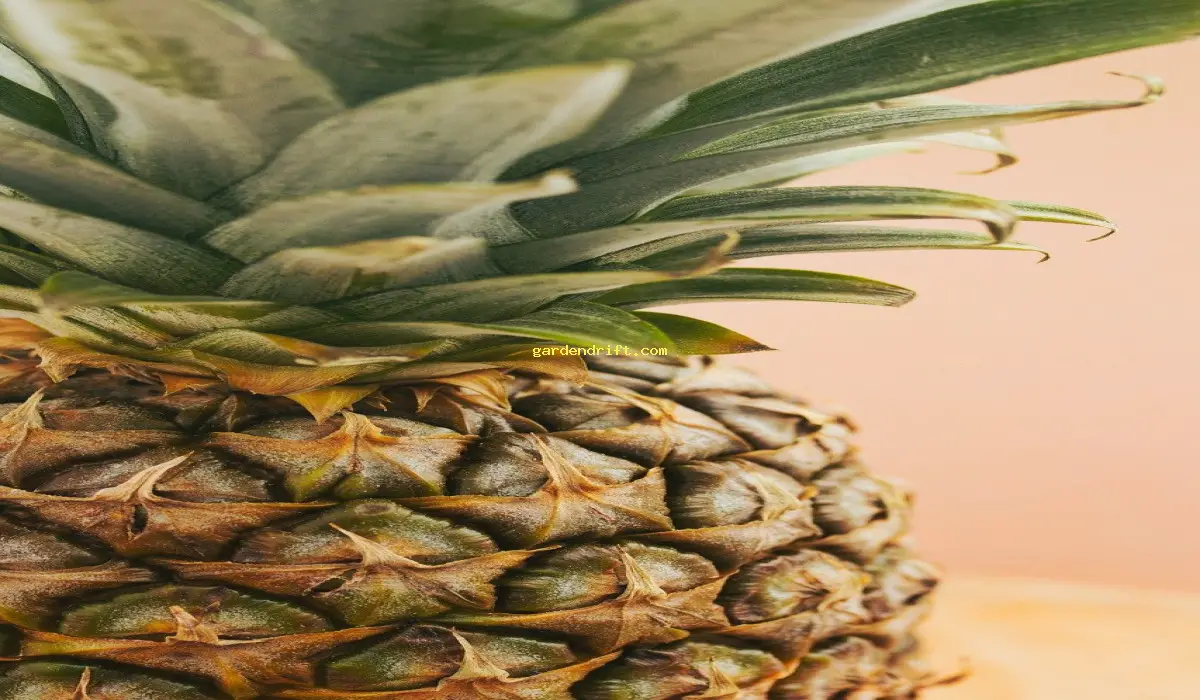5 Essential Tips for Successful Pineapple Plant Care Outdoors. Unlock the secrets to successfully growing your very own pineapple plant outdoors with our expert tips on care and maintenance. Discover the essential steps to ensuring your tropical fruit thrives in your outdoor space. Get ready to enjoy juicy, homegrown pineapples all season long! 5 Essential Tips for Successful Pineapple Plant Care Outdoors
The Basics of Pineapple Plant Care Outdoors
Growing pineapples in your own backyard can be a rewarding and delicious experience. Not only do these tropical fruits add a touch of exotic to your garden, but they are also relatively easy to grow and maintain. If you have a sunny spot in your yard, you can have a pineapple plant thriving in no time. However, there are certain considerations and techniques that you’ll need to keep in mind to ensure successful pineapple plant care outdoors. In this blog post, we’ll cover everything you need to know about growing pineapples outdoors.
Choosing the Right Spot for Your Pineapple Plant
Before you get started, you’ll need to choose the perfect spot for your pineapple plant. Pineapples thrive in a warm, sunny climate, so choose a spot in your yard that gets plenty of sunlight. Ideally, you’ll want a minimum of six hours of direct sunlight daily for optimal growth. Additionally, pineapples prefer well-draining soil, so avoid areas that are prone to standing water. If you live in a colder climate, you can still grow a pineapple plant outdoors as long as you have access to a greenhouse or a sheltered spot that can protect the plant during the winter months.
Planting Your Pineapple Plant
The next step in proper pineapple plant care outdoors is planting your pineapple. Pineapple plants can be started from seeds, but they can also be grown from the top of a store-bought pineapple. To start from a pineapple top, twist off the top when cutting the fruit, making sure to remove any remaining fruit flesh. Next, allow the stem to dry for a few days before planting it in a pot with well-draining soil. If starting from seeds, it’s best to use fresh pineapple seeds and plant them in a similar potting mix.
Proper Watering and Fertilizing Techniques
Once your pineapple plant is in the ground, it’s important to water and fertilize it correctly for optimal growth. Pineapple plants have shallow root systems, so it’s important to avoid overwatering as this can lead to rot. Water once or twice a week, making sure to soak the soil deeply rather than lightly watering every day. When it comes to fertilizing, using an organic, slow-release fertilizer is best. Fertilize once a month during the growing season, and reduce to once every three months during the cooler months.
Protecting Your Pineapple Plant
Pineapple plants can be vulnerable to pests and diseases, especially if not properly cared for. While it’s important to regularly check for signs of pests or diseases on your plant, prevention is key. One way to protect your pineapple plant is to add a layer of mulch around its base. This not only helps to retain moisture but can also deter some common pests. Additionally, regularly check for and remove any dead or dying leaves, as these can attract pests and diseases.
Harvesting Your Pineapple
One of the most exciting parts of pineapple plant care outdoors is harvesting your own home-grown pineapple. When your pineapple plant is mature, the fruit will turn from green to golden yellow. To harvest, simply twist the fruit off the plant, making sure to leave some of the stem attached. Next, remove any remaining fruit flesh and allow the pineapple to ripen for a few days before eating.
Tips for a Successful Pineapple Plant Care Outdoors
– Make sure your pineapple plant gets at least six hours of direct sunlight daily.
– Use well-draining soil and avoid overwatering to prevent root rot.
– Fertilize once a month during the growing season with an organic, slow-release fertilizer.
– Protect your pineapple plant from pests and diseases by regularly checking for and removing dead or dying leaves.
– Harvest your pineapple when it turns golden yellow and allow it to ripen for a few days before consuming.
In 5 Essential Tips for Successful Pineapple Plant Care Outdoors

5 Essential Tips for Successful Pineapple Plant Care Outdoors. Discover the essential 5 Essential Tips for Successful Pineapple Plant Care Outdoors
The Ultimate Guide to Pineapple Plant Care Outdoors: Tips and Tricks for Success
Growing pineapples in your own backyard is not only satisfying but also a great way to have a fresh and delicious fruit right at home. Pineapple plants are unique and fascinating, with their iconic spiky exterior and juicy yellow flesh. While they may seem like a tropical fruit that can only be grown in ideal conditions, with a little extra care and attention, you can successfully grow pineapples in your own backyard.
In this comprehensive guide, we will dive into all the essential aspects of pineapple plant care outdoors that you need to know to successfully grow and maintain your very own pineapple plant. From planting and soil care to watering and pruning, we have got you covered. Let’s get started!
Planting a Pineapple Plant Outdoors
Before diving into the details of caring for a pineapple plant, it’s crucial to know how to properly plant it in the first place. Here are the steps to follow:
Choose a Suitable Location
Select an area in your backyard that receives full sun for at least 6-8 hours a day. Pineapple plants thrive in hot and humid conditions, so make sure the location you choose has sufficient sunlight, warmth, and moisture. They also don’t do well in windy or cold environments.
Prepare the Soil
Pineapple plants prefer well-draining and slightly acidic soil with a pH range of 4.5 to 6.5. You can test your soil’s pH level using a home testing kit or by sending a sample to a local nursery or extension office. If your soil is not within the optimal range, you can adjust it by adding organic matter such as compost, manure, or peat moss.
Planting the Pineapple
Begin by removing the top of the pineapple fruit, including a bit of the fruit pulp. Peel off 1 to 2 inches of the basal leaves to expose the stem. Let it dry for a few days before planting. Once the top has dried, dig a hole in the soil and place the pineapple top in, making sure that the soil covers the base of the fruit. Gently pat down the soil to secure the plant in place.
Soil Care for Pineapple Plants Outdoors
While pineapple plants can thrive in a variety of soil conditions, there are still a few things you should keep in mind to ensure optimal growth and health.
Fertilizing
Pineapple plants need regular fertilizing to produce large and healthy fruit. Use a balanced fertilizer every 2-3 months during the growing season. You can opt for organic fertilizers such as fish emulsion or compost tea. Avoid using fertilizers high in nitrogen as it can lead to excessive leaf growth rather than fruit production.
Mulching
Mulching around your pineapple plant helps to retain moisture, suppress weed growth, and regulate soil temperature. Pineapple plants have shallow roots, so avoid using mulch that can trap too much moisture and cause root rot. A layer of 2-3 inches of organic mulch, like bark or leaves, is ideal.
Pest Control
Pineapple plants are relatively hardy and don’t have many major pest problems. However, they can attract mealybugs, scale, and spider mites. Keep an eye out for any signs of pest infestation, such as leaf discoloration or holes, and use organic or natural methods to control them.
Watering and Pruning Pineapple Plants Outdoors
Proper watering and pruning are crucial for pineapple plants to thrive and produce fruit. Here are some tips to keep in mind:
Watering
Pineapple plants require regular watering, especially during hot and dry periods. However, make sure not to overwater, as it can cause root rot and other fungal problems. Water deeply and thoroughly, allowing the topsoil to dry out before watering again.
Pruning
Pruning is an essential part of pineapple plant care outdoors. It helps to remove dead or decaying leaves, which can attract pests and diseases. It also promotes air circulation, which is crucial for preventing fungal diseases. Prune off any fruits that are not developing or appear underdeveloped to help the remaining fruit grow bigger and juicier.
Harvesting and Storing Pineapples
Once your pineapple plant starts to produce fruit, it can take about 6-8 months for it to fully ripen and be ready for harvest. Here’s how to know when your pineapple is ripe and how to store it:
Checking for Ripeness
A ripe pineapple should be fully yellow with a sweet aroma. The fruit should also come off easily when twisted from the plant. If the top leaves are easily removed, it’s an indication that the pineapple is ripe and ready to harvest.
Storing
Pineapples can be stored at room temperature for 2-3 days or in the refrigerator for up to a week. If you have an excess of ripe pineapples, you can also freeze them to use in smoothies or desserts later on.
Bonus Tips for Successful Pineapple Plant Care Outdoors
– Keep a lookout for any signs of pests, diseases, or nutrient deficiencies and take necessary actions immediately.
– Beware of overwatering, as it can lead to root rot and other fungal diseases.
– Avoid using chemical fertilizers or pesticides, as it can harm both the plant and the environment.
– Pineapple plants do well when grown in a container, making it easier to move them indoors during colder months.
– Consider growing different varieties of pineapples for a variety of flavors and tastes.
– Have patience, as pineapple plants can take up to 2-3 years to produce fruit, but once they do, they can continue producing for several years.

With the right care and attention, you can have a bountiful supply of fresh, juicy pineapples right in your backyard. Remember to plan your planting carefully, keep an eye on soil conditions, water and prune regularly, and you’ll be sure to enjoy delicious homegrown pineapples in no time.
In Conclusion
Pineapple plants may seem like a daunting plant to grow, but with the right care, they can thrive and produce delicious fruit. Remember to choose a suitable location, prepare the soil, and properly plant the pineapple top. Fertilize, mulch, and keep an eye out for pests and diseases. Water and prune regularly, and you’ll be sure to have a healthy and fruitful pineapple plant in your backyard! So why not give it a try and enjoy the satisfaction of growing your own tropical fruit? 5 Essential Tips for Successful Pineapple Plant Care Outdoors.

Unlock the secrets to successfully growing your very own pineapple plant outdoors with our expert tips on care and maintenance. Discover the essential steps to ensuring your tropical fruit thrives in your outdoor space. Get ready to enjoy juicy, homegrown pineapples all season long!. Pineapple 5 Essential Tips for Successful Pineapple Plant Care Outdoors
How do I care for outdoor pineapple plants?
Pineapple plants thrive in areas with plenty of sunlight and well-draining soil. Make sure to plant them in a spot that receives 6-8 hours of sunlight each day. When watering, aim for the soil to be consistently moist but not waterlogged. Fertilize your pineapple plant every 2-3 months with a balanced fertilizer. Mulching can also help retain soil moisture and regulate temperature for optimal growth. During the winter, it’s important to protect your outdoor pineapple plants from frost by covering them or bringing them indoors.
How often should outdoor pineapple plants be watered?
Pineapple plants should be watered consistently, but not over-watered. Depending on climate and soil conditions, this may mean watering 2-3 times a week in warmer temperatures and less frequently in colder temperatures. The key is to keep the soil consistently moist, but not waterlogged.
Do I need to fertilize my outdoor pineapple plants?
Yes, it is recommended to fertilize outdoor pineapple plants every 2-3 months. Use a balanced fertilizer with equal amounts of nitrogen, phosphorous, and potassium to promote healthy growth. Avoid using too much fertilizer as it can burn the plant’s roots.
Can outdoor pineapple plants survive in cold climates?
No, pineapple plants are tropical plants and require temperatures above 55°F to survive. If you live in a colder climate, you can still grow outdoor pineapple plants during the warmer months and bring them indoors or cover them during the winter.
How do I know when my outdoor pineapple is ripe?
Pineapples are ready to be harvested when they start turning yellow and have a sweet smell at the base of the fruit. Another way to check is to gently pull on the center leaves of the pineapple, they should come off easily when the fruit is ripe.
How long does it take for an outdoor pineapple plant to produce fruit?
An outdoor pineapple plant can take anywhere from 18-24 months to produce fruit. This is a natural process, so be patient and continue to care for your plant during this time.
Can I grow pineapple plants in pots outside?
Yes, you can grow pineapple plants in pots outdoors as long as they receive enough sunlight and are planted in well-draining soil. Place the pot in a spot that receives 6-8 hours of sunlight each day and make sure to water and fertilize as needed.
Do I need to prune my outdoor pineapple plants?
No, pruning is not necessary for outdoor pineapple plants. However, you can trim off any dead or damaged leaves to keep the plant looking tidy.
Can I grow outdoor pineapple plants from pineapple tops?
Yes, you can grow outdoor pineapple plants from the tops of a pineapple fruit. Simply remove the top of the fruit and peel back the bottom layers of leaves. Let the top dry for a few days before planting it in soil.
What pests and diseases should I watch out for when caring for outdoor pineapple plants?
Some common pests that can affect outdoor pineapple plants include mealybugs, scale insects, and thrips. These pests can be controlled with insecticides or by manually removing them. Diseases like root rot and leaf spot can also occur, so make sure to regularly check your plants for any signs of disease and take necessary steps to treat them.
Can I grow outdoor pineapple plants in partial shade?
It is best to plant pineapple plants in an area with full sunlight, but they can tolerate some partial shade. Just make sure they receive at least 6 hours of sunlight each day for optimal growth and fruit production.
How do I propagate outdoor pineapple plants?
To propagate outdoor pineapple plants, you can remove the suckers (small offshoots that grow at the base of the plant) and replant them in moist soil. Another option is to remove the suckers and let them dry for a few days before planting them in soil. Make sure to water and fertilize the new plants regularly.
What kind of soil is best for outdoor pineapple plants?
Pineapple plants prefer well-draining soil that is slightly acidic, with a pH level between 4.5-5.5. You can also add compost or other organic matter to help retain moisture and nutrients in the soil. Avoid using heavy or compacted soil, as this can lead to root rot.
Should I remove the fruit from my outdoor pineapple plant?
If you are growing a pineapple plant for its fruit, then yes, you should remove the fruit when it is ripe. This will allow the plant to put its energy into producing new fruit. However, if you are growing the plant for ornamental purposes, you can leave the fruit on as long as you like.
Can I grow a pineapple plant from a pineapple that I bought from the grocery store?
Yes, you can grow a pineapple plant from a fruit bought at the grocery store, but it may not produce the same quality of fruit as one grown from a suckering plant. It is important to choose a pineapple that is fully ripe and hasn’t been treated with chemicals. Simply remove the top of the fruit and follow the same steps as growing from a pineapple top. 5 Essential Tips for Successful Pineapple Plant Care Outdoors
